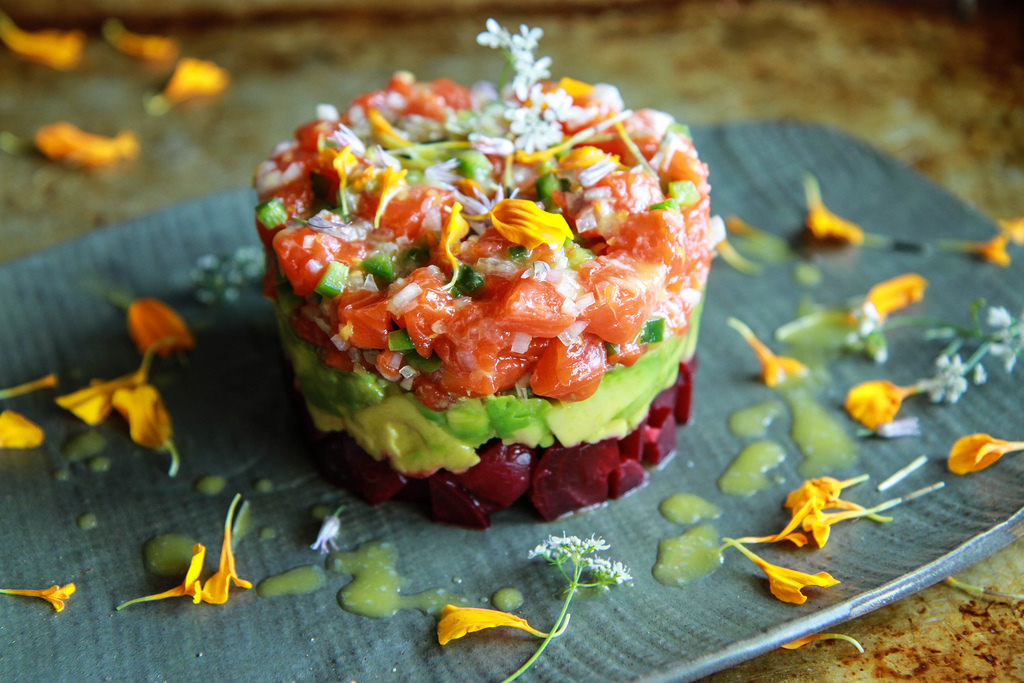Beet tartare is a vegetarian take on the classic steak tartare, offering a stunning and tasty alternative that even meat lovers can appreciate. This dish showcases the natural sweetness and vibrant color of beets, combined with the rich textures and flavors typically found in its meat-based counterpart. Ideal for a starter or a light meal, beet tartare is not only delicious but also a visually appealing way to impress guests with a healthy, gourmet option.
Selecting and Preparing the Beets

Choosing the right beets is crucial for the best flavor and presentation:
- Variety: Opt for fresh, firm beets. Red beets are most common, but golden beets or a mix of both can create a beautiful, colorful dish.
- Preparation: Roast the beets to enhance their natural sweetness. Wrap whole beets in foil and roast in a preheated oven at 400°F (200°C) for about 40-60 minutes, depending on their size, until tender. Once cooled, peel the beets and dice them into small, even cubes. This mimics the traditional tartare cut and allows for a pleasant texture in every bite.
Ingredients for Beet Tartare
Creating a flavorful beet tartare involves combining various ingredients that add depth and complexity:
- Aromatics and Herbs: Finely chopped shallots or red onion, capers, and fresh herbs like parsley or chives give the dish a sharpness that contrasts well with the sweetness of the beets.
- Acid and Seasoning: A good splash of quality olive oil and a squeeze of fresh lemon or lime juice brighten the dish, while salt and freshly cracked black pepper bring all the flavors together. You might also add a touch of Dijon mustard for an authentic tartare experience.
- Additional Mix-ins: For added texture and richness, consider incorporating avocado, chopped nuts, or crumbled goat cheese.
Assembling the Tartare
- Mixing the Ingredients: In a bowl, combine the diced beets with the shallots, capers, herbs, olive oil, lemon juice, salt, and pepper. Gently toss to ensure the beets are evenly coated with the dressing and the flavors are well distributed.
- Molding: To serve, use a ring mold or a small cup to shape the beet mixture into neat, compact rounds on each plate. Carefully remove the mold to maintain the shape of the tartare.
Serving Suggestions
Beet tartare can be served with a variety of accompaniments:
- Crunchy Element: Offer toasted bread, crostini, or crackers on the side to add crunch and make the dish more filling.
- Garnishes: Top the tartare with microgreens or a small dollop of horseradish or vegan cream for added flavor and visual appeal.
- Pairings: A light salad with vinaigrette or a selection of pickled vegetables complements the dish perfectly, balancing the earthiness of the beets with acidity and freshness.
Conclusion: Celebrating Vegetarian Flavors
Beet tartare is a testament to the versatility and richness of vegetarian cuisine. It transforms the humble beet into a gourmet dish that’s both nutritious and flavorful. Whether you’re catering to vegetarians or simply looking to diversify your culinary repertoire, beet tartare offers a fresh and modern twist on a classic, proving that vegetarian dishes can be as luxurious and satisfying as their meat-based dingdongtogel inspirations. Enjoy this vibrant dish as a celebration of flavors, textures, and colors, bringing a piece of culinary artistry to any table.
